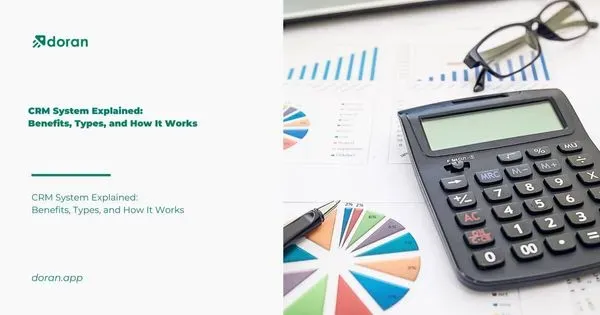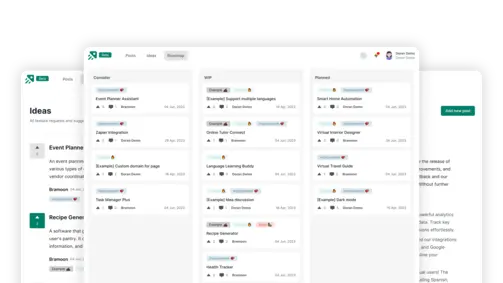The Data Journey: a Step-by-Step Business Intelligence Roadmap
Create changelog and product roadmap for your product
Explore nowTable of contents 9 min
In the data-driven landscape of modern business, a well-constructed business intelligence roadmap is the cornerstone for organizations aiming to harness the power of data. This article serves as your guide to understanding and creating a practical business intelligence roadmap. We will check into the strategic role of a roadmap and how organizations can navigate the complexities of data utilization. Whether you’re a business leader, data analyst, or IT professional, the insights within will provide you with a roadmap for unlocking the full potential of business intelligence within your organization.
A Business Intelligence Strategy: What is It?
Implementing a business intelligence system in your organization is called a business intelligence strategy. This entails identifying the key players, evaluating the circumstances, setting objectives, and determining the KPIs to track your progress toward these objectives.
The strategy is defined in terms of the organization, architecture, processes, vision, and solutions. A roadmap is then created based on the assessment, the feasibility, and the priority.
Implementing business intelligence requires extensive pre-planning, a large cast of players, and financial outlays. However, the benefits greatly exceed the expenses, and it is commonly acknowledged that business intelligence ROI is genuine, although occasionally challenging to measure. In the long run, the costs of not putting it into practice are greater.
Find out more: Business Roadmap Template: Guiding Your Business Journey
10 Steps on Creating Your Business Intelligence Roadmap
Approach the Procedure with an Open Mind.

Early trend, trap, and opportunity identification is simple with the correct BI solutions. However, using the appropriate instrument isn’t always simple. To our knowledge, even the greatest software requires certain preliminary labour-intensive tasks to reach its full potential. Approaching problems like complex data concerns, opposition from change management, declining sponsorship, IT reluctance, and difficulties with user adoption will be easier if you have the correct mindset. Moving the process ahead will require you to remind yourself and your stakeholders of the pain points that made it necessary.
Decide on the Goals of the Stakeholders.

More data access and insights could likely benefit every employee at your company. It does not follow that they are all important players. As soon as possible, you need to identify your main stakeholders. Next, ascertain their requirements; clear and noticeable executive sponsorship is vital. It is critical to gather and establish expectations early for the executive team. After that, go beyond the executive group. They frequently lack the same first-hand experience as other employees. Gather and rank the organization’s key performance indicators (KPIs) and pain points. Although not all of them will be included in the initial rollout, starting large and reducing afterwards is preferable.
Select a Sponsor.

Even though a business intelligence plan should involve a variety of stakeholders, the execution process must be led by a sponsor. Placing the Chief Technical Officer (CTO) or Chief Information Officer (CIO) first could be appealing. Usually, this is not the best course of action. The sponsor should be an executive with overall accountability, a wide understanding of the organization’s strategy and objectives, and the ability to convert the corporate mission into mission-focused KPIs.
CMOs and CFOs go well together. They can oversee the implementation through a formal business case and take accountability for scope modifications. The selected sponsor and the CIO/CTO must stay in close contact.
Hire a Chief Data Officer (CDO).

Bernard Marr, a big data guru, wrote a piece titled The Rise of Chief Departments. “Experian has predicted that the CDO position will become a standard senior board-level role by 2020, bringing the conversation around data gathering, management, optimization, and security to the C-level,” the author noted, pointing to a very intriguing trend. We are thrilled that data is now permanently present in the C-Suite. The CDO, or a function comparable to it, is an excellent critical stakeholder to involve in BI deployment, even though, like the CIO, they generally shouldn’t be the primary sponsor. Furthermore, they will probably become the project’s owners after the initial implementation.
Evaluate the Existing Circumstances.

Evaluating the existing state of affairs should be one of the most important parts of a business intelligence roadmap. The next step is to analyze the software stack currently in use and the organizational structures and processes that surround it—or don’t—after you have all the necessary stakeholders seated at the table. Discover what is effective; you don’t want to completely discard a report or procedure already crucial. If you can’t include it into the new plan, your staff will become upset. Conversely, record everything that isn’t functioning. Which queries about data analysis are you presently unable to respond to? Which procedures are flawed or ineffective?
In addition to all of this, you also need to gather information on the data sources you currently use and how they are kept. Choose the ones that are essential to your business intelligence plan. This should involve planning the services for data storage as well. Will the diverse data sources continue to exist? Or does it make sense for your company to construct a data warehouse?
This is a big step, and like all these phases, IT and the different business stakeholders should be involved.
Read more: Project Roadmap Examples: Mapping Projects to Excellence
Create a Budget.

After defining the company’s existing state, it’s time to consider creating a budget. Creating an appropriate budget is one of the most important steps in creating a successful business intelligence roadmap. By having a budget, you can ensure you have all you need to get started by strategically allocating your resources. As was indicated in the previous point, for instance, you should consider the costs associated with employing a Chief Data Officer, providing training for your staff, and, of course, deciding which software or system to purchase.
There are many options available on the market for business intelligence solutions that provide a variety of BI capabilities to help businesses of all sizes make the most of their data. Their prices typically change based on the needs and size of the business. For this reason, before looking for one of these solutions, it’s critical to have a clear idea of your unique requirements and the amount of money you have accessible. This way, you can evaluate vendors and select the most suitable one for your needs.
Clean the Data.

Clean analytics out, clean data in. It’s that easy. Although it might not be as easy, cleaning your data is essential to the success of your business intelligence. It is imperative to have strong data quality management to keep the cleanest data possible for improved operational operations and decision-making based on such data.
It is projected that poor-quality data costs American firms alone over $9.7 million annually due to its negative effects on profitability, productivity, and overall return on investment. Of course, perfection is unachievable, so obsessing over 100% pure data quality is pointless. This is especially true since the goal isn’t to establish arbitrary standards for what constitutes high-quality data. The aim is to increase the return on investment (ROI) for your department and any others that depend on this data.
Determine the KPIs or Key Performance Indicators.

KPIs are quantifiable figures that indicate how well a firm is accomplishing its goals. They are the cornerstone of a successful BI plan. KPIs highlight areas where firms are doing well and those that want development. It is essential to take into account each company’s unique strategy when putting a BI plan into action and to match KPIs with organizational goals. Making KPIs for everything could be alluring. The best course of action is to begin with the most significant KPIs and develop standards and governance while keeping KPI examples in mind. Later on, you can always elaborate on these.
Select the Ideal Partner or Tool for Your Company.

Your business intelligence roadmap is this far along, and you still don’t have a tool. During this process, you will have to decide and compare on-premises vs cloud solutions. Additionally, you must select an easily scalable solution as your business and demands expand. Seek adaptable solutions that cater to every user’s request. Don’t rush this step, and make use of the free trials!
Adopt a Progressive Strategy.

Your business intelligence roadmap won’t be built in a day. A BI strategy that works needs to be iterative. Consider “actionable” and move cautiously. As examples, select a few KPIs and create a few business dashboards. Get opinions. Every few weeks, repeat the process with fresh releases. Always ask yourself what is effective and who is gaining from it.
A strong business intelligence roadmap has no end in sight. It is something that your organization should be long-term invested in. Your data, reports, and procedures should all be continuously measured and improved. Never allow it to get stale; keep raising the bar.
As we conclude our exploration of the business intelligence roadmap, remember that effective data utilization is not just a trend but rather a strategic necessity. A well-crafted roadmap ensures organizations navigate the vast data landscape purposefully and precisely. By leveraging the insights from this guide, you’re equipped to understand the nuances of business intelligence and implement a roadmap that transforms data into a valuable asset. As the business landscape continues to evolve, let your business intelligence roadmap be the compass that guides your organization toward data-driven success and a sustainable competitive edge.
What to not miss out on our blog
Gain insightful knowledge and invaluable experiences from dedicated experts.

CRM System Explained: Benefits, Types, and How It Works
Discover everything about CRM system. Learn the benefits and how a CRM system works to improve customer relationships and streamline business operations.

Are you ready? Start your free trial today.
Enhance communication, keep track of the progress, understand customers' insight and more by taking your first trial on Doran.
Sign up for free

